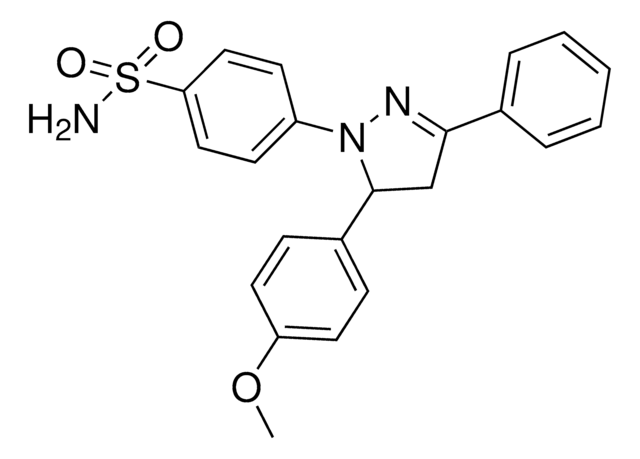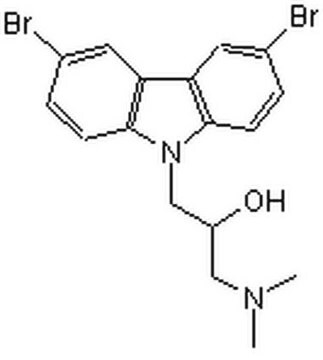W2270
Wiskostatin
Synonym(s):
1-(3,6-dibromocarbazol-9-yl)-3-(dimethylamino)propan-2-ol
About This Item
Recommended Products
Assay
≥98% (HPLC)
form
powder
color
white to beige
solubility
DMSO: 10 mg/mL, clear
storage temp.
2-8°C
SMILES string
CN(C)CC(O)Cn1c2ccc(Br)cc2c3cc(Br)ccc13
InChI
1S/C17H18Br2N2O/c1-20(2)9-13(22)10-21-16-5-3-11(18)7-14(16)15-8-12(19)4-6-17(15)21/h3-8,13,22H,9-10H2,1-2H3
InChI key
XUBJEDZHBUPBKL-UHFFFAOYSA-N
General description
Application
- as a small-molecule inhibitor of Wiskott-Aldrich syndrome protein (WASP) in human osteosarcoma U2OS cells and mouse-tail fibroblast cell lines
- as a neural (N)-WASP inhibitor in cultured neurons and in the human embryonic kidney (HEK293) cells expressing HA-Parkin
- as a neural (N)-WASP inhibitor in dorsal root ganglion (DRG) cells to investigate vascular endothelial growth factor (VEGF) effect on the actin related protein 2/3 complex (Arp 2/3)
Biochem/physiol Actions
Signal Word
Danger
Hazard Statements
Precautionary Statements
Hazard Classifications
Acute Tox. 3 Oral - Aquatic Chronic 4
Storage Class Code
6.1C - Combustible acute toxic Cat.3 / toxic compounds or compounds which causing chronic effects
WGK
WGK 3
Certificates of Analysis (COA)
Search for Certificates of Analysis (COA) by entering the products Lot/Batch Number. Lot and Batch Numbers can be found on a product’s label following the words ‘Lot’ or ‘Batch’.
Already Own This Product?
Find documentation for the products that you have recently purchased in the Document Library.
Customers Also Viewed
Our team of scientists has experience in all areas of research including Life Science, Material Science, Chemical Synthesis, Chromatography, Analytical and many others.
Contact Technical Service














